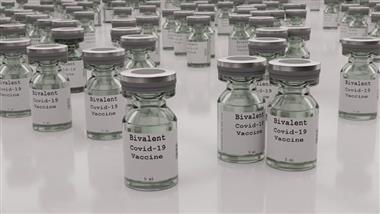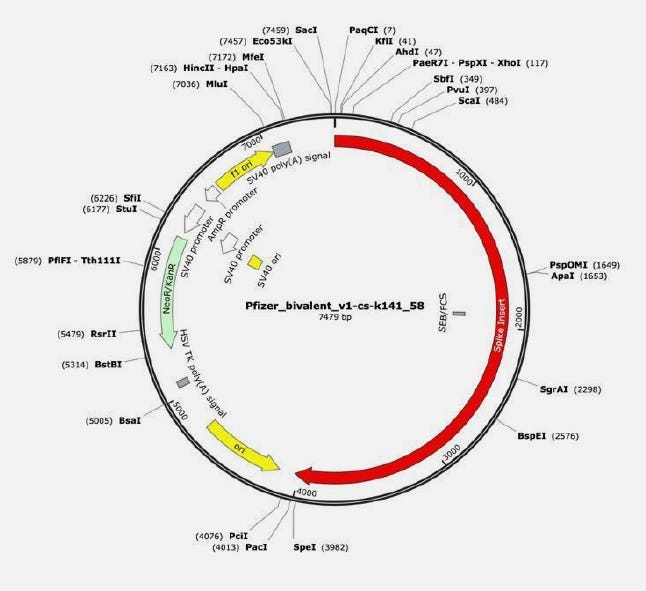DNA Contamination in Bivalent COVID-19 “Vaccines”: Insights from Kevin McKernan

The greatly respected geneticist Kevin McKernan and his team have presented their most recent research, now available in preprint.
Using five different laboratory methods, McKernan and his team studied two vials each of Moderna’s and Pfizer’s bivalent “vaccines.” Both brands contained levels of DNA contamination that exceeded the limits set by both the European Medicines Agency (EMA) and the U.S. FDA.
.

.
Pfizer’s bivalent “vaccine” contains several components when assembling the RNA sequence library. These include the spike protein insert (marked in red), a bacterial origin of replication (yellow), a Neo/Kan resistance gene (green), and two origins of replication (yellow) along with an SV40 promoter (marked in yellow and white).
.

.
When testing for RNA and DNA in the vaccine, the ratio of RNA to DNA was found to be between 43:1 and 161:1. However, the European Medicines Agency (EMA) requires a much higher ratio of 3030:1 for safety. This means the amount of DNA in the vaccine is 18 to 70 times higher than what is allowed by the EMA.
This raises multiple concerns, adding to the growing body of evidence calling for an immediate halt to these injections. One particularly troubling issue is the danger of DNA contamination in breast milk. Current testing methods would miss this problem, as exosomes containing DNA in breast milk could easily pass into suckling infants through their highly receptive neonatal upper digestive tract. The risk of genetic invasion via breast milk is alarming and could constitute a serious violation of medical safety.
The research team consists of Kevin McKernan, Yvonne Helbert, Liam T. Kane, and Stephen McLaughlin from Medicinal Genomics. Their preprint report is titled “Sequencing of Bivalent Moderna and Pfizer mRNA Vaccines Reveals Nanogram to Microgram Quantities of Expression Vector dsDNA per Dose” and can be found here.
*
Click the share button below to email/forward this article to your friends and colleagues. Follow us on Instagram and Twitter and subscribe to our Telegram Channel. Feel free to repost and share widely Global Research articles.
Birds Not Bombs: Let’s Fight for a World of Peace, Not War
Featured image is from Mercola


